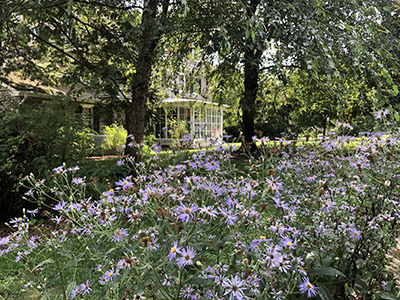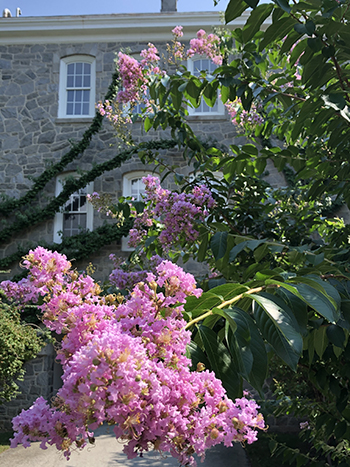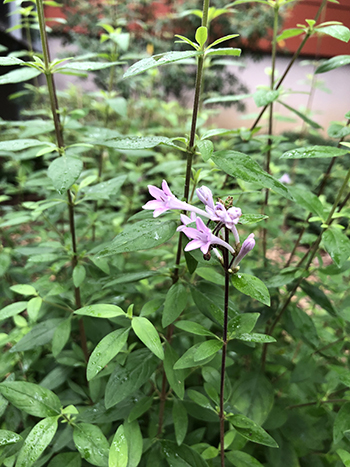
Plants of the Week: Aug. 31

Eurybia x herveyi ‘Twilight’ (Hervey’s aster) is in full bloom along the lower Biostream near the Ben West House. For a month or so plants look like an attractive coarse textured groundcover. Upright stems elongate from the basal leaf mass and bear open flat-topped clusters of lavender blue blooms in late summer and fall. The rhizomatous growth habit makes E. x herveyi an ideal candidate for mass planting. The aster is a naturally occurring hybrid between E. spectabilis and E. macrophylla, both of which are native to Eastern North America. Photo credit: J. Coceano

Late summer is crapemyrtle season! Lagerstroemia ‘Biloxi’ is a pink flowering vase-shaped tree introduced by the U.S. National Arboretum in 1987. It was selected to have a long bloom season, better winter hardiness, drought tolerance, and increased resistance to powdery mildew. This is a great choice for urban areas that have small spaces and is considered to be one of the best cultivars for street tree use. The cultivar’s natural vase-like habit and vigorous growth help it quickly get up and over traffic and pedestrians below. Three specimens are planted in the Isabelle Cosby Courtyard island beds between Parrish Hall and Kohlberg Hall. Photo credit: J. Coceano

Leptodermis oblonga is a small, mounding, deciduous shrub that typically grows 12-18” tall but produces flowers throughout much of the growing season. Fragrant, tubular, lavender flowers appear in clusters in late spring bloom followed by intermittent flowering on new wood throughout the rest of the summer into fall. While Chinese leptodermis is a relatively obscure member of the madder family, Rubiaceae, it’s more popular relatives include coffee, Coffea, and buttonbush, Cephalanthus. Leptodermis oblonga is planted as a foundation plant along Old Tarble in the Summer Border. Photo credit: J. Coceano





No Comments